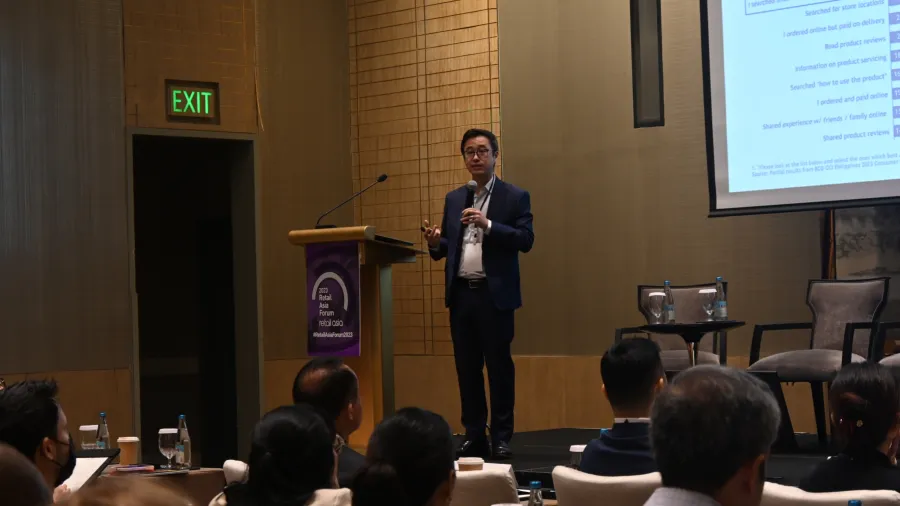
Four shifts transforming Southeast Asia’s retail landscape
The region is seeing the rise of minimarts, and artificial intelligence, amongst other trends.
Southeast Asia’s retail sector is being shaped by the four major trends in the industry anchored on the rise of small format stores, the return of omnichannel, the advantages of ecosystems and alliances, and the retail revolution led by artificial intelligence (AI).
Julian Cua, partner at Boston Consulting Group, said small format stores are growing in the region and “is here to stay.” In Indonesia, minimarket and convenience stores accounted for 73% of the modern trade retail market size by format, increasing from 57% in 2018.
Cua cited three key developments that are disrupting small formats. First is the rise of the challengers or newer players. Second is incumbent players facing challenges by continued expansion, strengthened digital proposition, re-orientation of value propositions, and rethinking of format propositions.
Lastly, the traditional trade is evolving to digitalise its operations.
“In the Philippines, we're seeing Alfamart than Dali coming in already disrupting the space, we're seeing conglomerates and supermarket brands starting to improve their offering,” Cua said at the Retail Asia Forum in Manila.
“We're seeing sari-sari stores (local convenience stores) today actually becoming more digitised, either directly Facebook Messenger and other digital channels, or using platform players,” he added.
In Malaysia, meanwhile, 99 Speedmart took around 10 years to establish its 1,000th store in 2017 but it only took it four years to open 1,000 more stores and reached its 2,000th outlet in 2021, which translates into launching five stores every week.
In the Philippines, supermarkets still account for the lion's share, but consumers are starting to go to minimarts more with 31% saying they are already seeing it as a source of main groceries. The share of minimarkets and convenience stores in modern trade grocery retail market size is still at 9%, but are expected “to follow pathways of its regional peers.”
“We're going to see a shift where Filipinos will continue to be demanding about how they want to receive their goods, they will continue to want the items to be close to where they live. And if they find that it's good enough, they'll start replacing a lot of these shopping missions that they have right now and try to stay closer to within their neighbourhood,” he said.
“The shopper missions of consumers are getting diversified,” Cua added.
Omnichannel
Post-pandemic, Cua said the shift to online is even more evident. Large retailers such as Thailand’s Central Retail is seeing significant contribution from its online channel to its total retail sales at 18%.
Thailand’s CP ALL also saw online channels accounting for 10% of its total retail sales, whilst Indonesia’s Mitra Adiperkasa reported a 9% contribution.
Cua said this is also due to retailers having leveraged digital platforms to build awareness and discovery across multiple methods including short-form videos, heavy use of influencer marketing and the use of social media marketplaces such as TikTok shops.
In the Philippines, a BCG survey showed over half of Filipinos go online to search for information on price comparison and about the product/service.
“[Consumers go to the] stores, they go to the malls, but they also complement that shopping with discovering things online and shopping things online,” Cua said.
“Moving forward, we expect retailers to strengthen their data capabilities with Personalisation and Retail Media as key unlock,” he said.
Creating ecosystem
Retail operations are no longer operating to win on their own. Rather they now view digital ecosystem and alliances “as a source of competitive advantage.”
In the region, Cua said nearly half of the largest retailers are part of local conglomerates that are involved in other businesses, making them well-positioned to drive a digital ecosystem and offer more products and services to their customers.
For example, Thailand’s Central has grown from a department store to become one of the leading multi-format, omnichannel retailers in Southeast Asia.
Central began its digital ecosystem in 2019 by launching an omnichannel platform. In 2022, omnichannel holds over 18% share in its total sales and it now has more than 27 million loyalty member customers worldwide.
Central merged and streamlined the experience between the Central and Robinson brands, creating their own online storefront with a consistent experience. They have Cua also said they have synergised its 14 business units to capture all their data and feed it to an algorithm to provide a personalised experience.
Cua said this resulted in a six-fold increase in the total member base and a five times increase in overall gross merchandise value compared to other consumers shopping in just one single brand.
“You don't have to have a diversified conglomerate to be able to unlock [an ecosystem],” Cua said.
“The question is how can we best work with a lot of like these digital players, and create partnerships that help build our retail footprint and builds traffic into our retail footprint,” he added.
The rise of AI
Another shift in the retail industry is to move towards AI which Cua said is a “catalyst for retail revolution.”
It is now ripe for retailers to invest in AI to drive “competitive advantage” as there are various data present on customers, businesses and markets that will help in enhancing decisions.
The technology will be beneficial as customers are expecting a seamless, personalised and omnichannel experience. Digital leaders who are investing 15% higher operational expenditure on tech and analytics, especially AI, are seeing 1.5 to 2.5 times greater total shareholder return.
Cua warned that retailers delaying investments risk being left behind as suppliers and competitors are already investing in AI to improve their operations.
They can also risk “making regrettable technology decisions” and missing the opportunity “to scale digital talent in [a] hot, competitive market.”
Generative AI (GenAI) can help generate simulation of a clothing that fits each customer which may result in increased engagement and conversions, and a reduced return rate. It can aid in developing products rapidly by generating fashion design ideas based on trends and customer insights.
The technology can also help in personalising the customer experience by creating a “virtual personal stylist” that provides recommendations.
“Turbocharge your AI journey. Focus not just on technology, [but] also consider how to improve people and processes to drive AI outcomes. Find use cases for GenAI,” he noted during his presentation.

















 Advertise
Advertise







